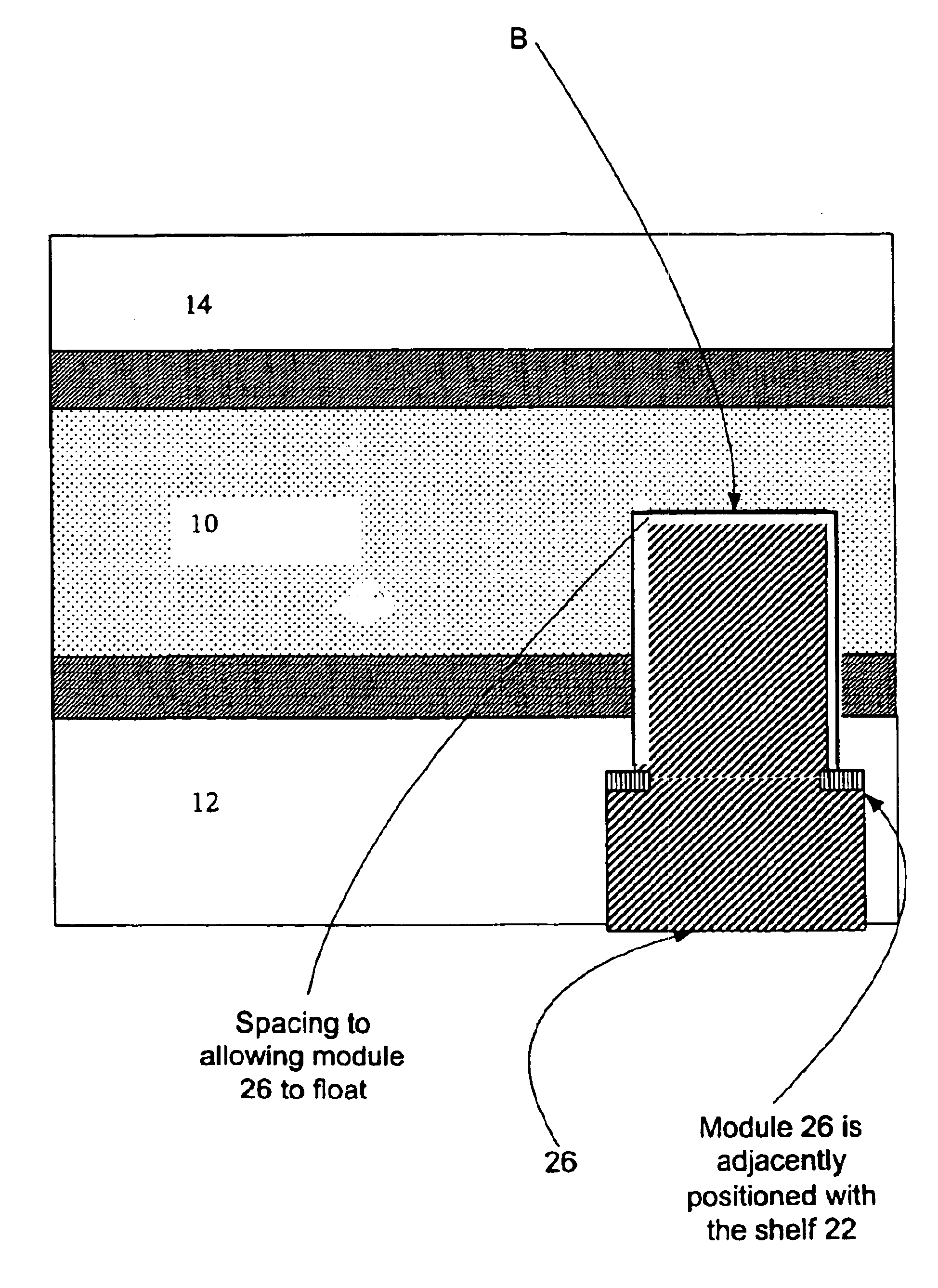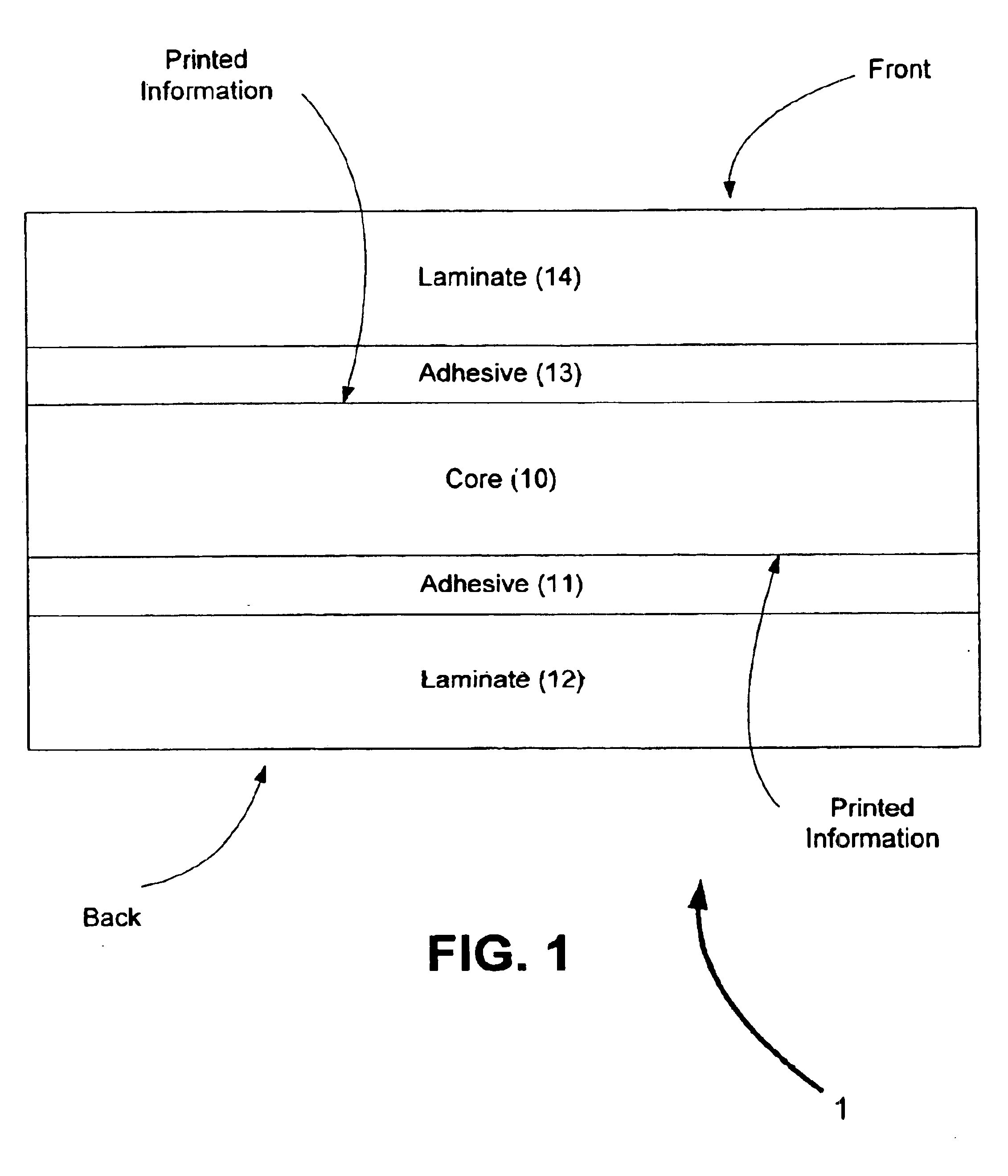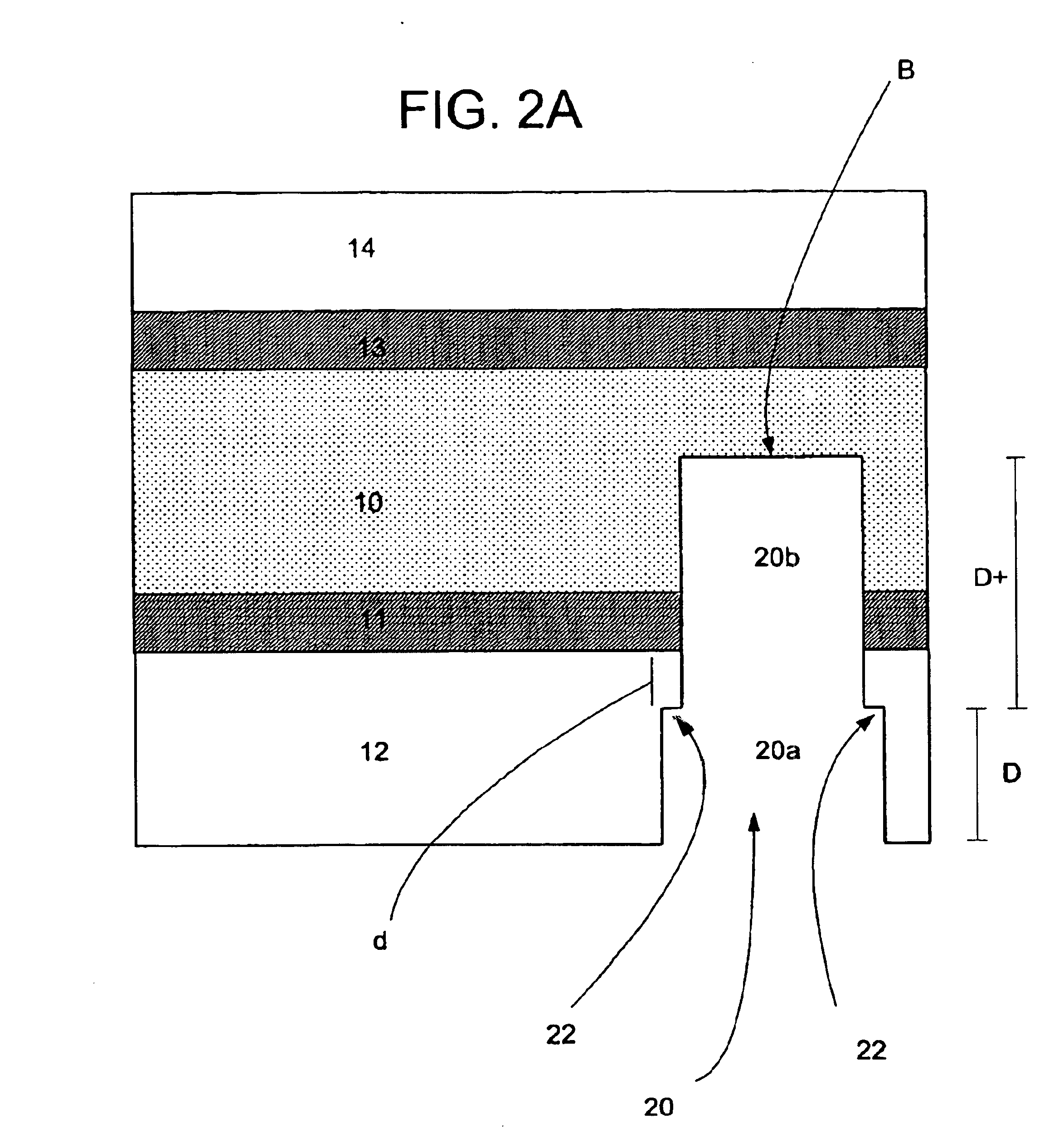Contact smart cards having a document core, contactless smart cards including multi-layered structure, pet-based identification document, and methods of making same
a contact smart card and document core technology, applied in the field of identification documents and smart cards, can solve the problems of not having an exhaustive list of possible smart card functionality, affecting the accuracy of identification, and the inability to verify one's true identity, so as to reduce the chances of loss, misappropriation or theft, and the effect of ensuring the validity
- Summary
- Abstract
- Description
- Claims
- Application Information
AI Technical Summary
Benefits of technology
Problems solved by technology
Method used
Image
Examples
example)
Milling Tool (Example)
FIGS. 5A-5D are diagrams of a milling tool that can be used to mill a cavity in an ID document. It should be appreciated that this is but one of many tools that can be used to provide a cavity in an identification document. In some cases, a laser or chemical process is used to create a cavity. In other implementations, conventional tools or cutters are used to machine or cut a cavity in an identification document. It will also be appreciated that while specific dimensions (in millimeters) are provided in the FIG. 5 representations, the present invention is not so limited. Indeed the dimensions can be changed in many respects without deviating from the scope of this aspect of the present invention.
With reference to FIGS. 5A and 5B, the cutting tool 50 preferably includes a shaft 51 having a first 52 and second 54 section. The shaft 51 can be fluted as shown in the figures. The first section 52 includes a first cutting edge 52a and the second section 54 includes ...
PUM
| Property | Measurement | Unit |
|---|---|---|
| angle | aaaaa | aaaaa |
| thickness | aaaaa | aaaaa |
| thickness | aaaaa | aaaaa |
Abstract
Description
Claims
Application Information
 Login to View More
Login to View More - R&D
- Intellectual Property
- Life Sciences
- Materials
- Tech Scout
- Unparalleled Data Quality
- Higher Quality Content
- 60% Fewer Hallucinations
Browse by: Latest US Patents, China's latest patents, Technical Efficacy Thesaurus, Application Domain, Technology Topic, Popular Technical Reports.
© 2025 PatSnap. All rights reserved.Legal|Privacy policy|Modern Slavery Act Transparency Statement|Sitemap|About US| Contact US: help@patsnap.com



